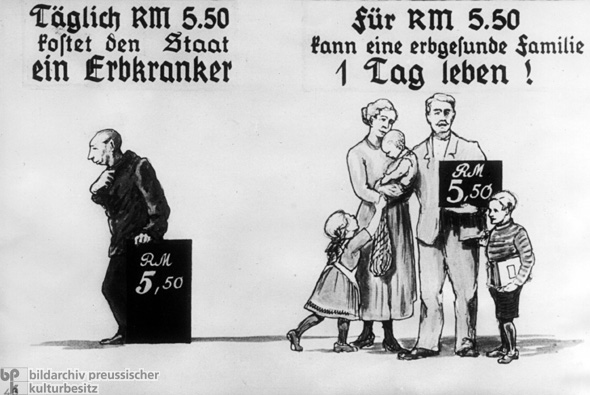













INTRODUCTION | DOCUMENTS | IMAGES | MAPS | EDITOR
|
National Socialist population policy strove to "upbreed" the German national community [Volksgemeinschaft] through state-directed racial hygiene. The regime practiced so-called positive eugenics by using propaganda and financial and legal incentives to promote high birthrates among "Aryans" of sound racial stock. At the same time, it also practiced "negative eugenics" by preventing allegedly inferior racial enemies from reproducing. The first step in this direction was the "Law for the Prevention of Offspring with Hereditary Diseases" of July 14, 1933, which condemned a host of medically and biologically defined groups to forced sterilization. Henceforth, starting a family was no longer a private matter but instead subject to state supervision. Starting in 1939, patients with incurable or hereditary diseases became the regime’s first victims of systematic murder. The killings were carried out under the so-called T-4 Operation. The destruction of "life not worth living" was euphemistically termed "euthanasia." Propaganda images such as the one reproduced below were supposed to persuade the general population that alleged "inferiors" were parasites livings at the expense of the German people. This image, part of the slide series "Blood and Soil," suggests that the hereditarily diseased man on the left costs the state 5.50 Reichsmarks per day – enough for a healthy family of five to live on for one day.
© Bildarchiv Preußischer Kulturbesitz |
 print version
print version return to image list
return to image list previous image
previous image
